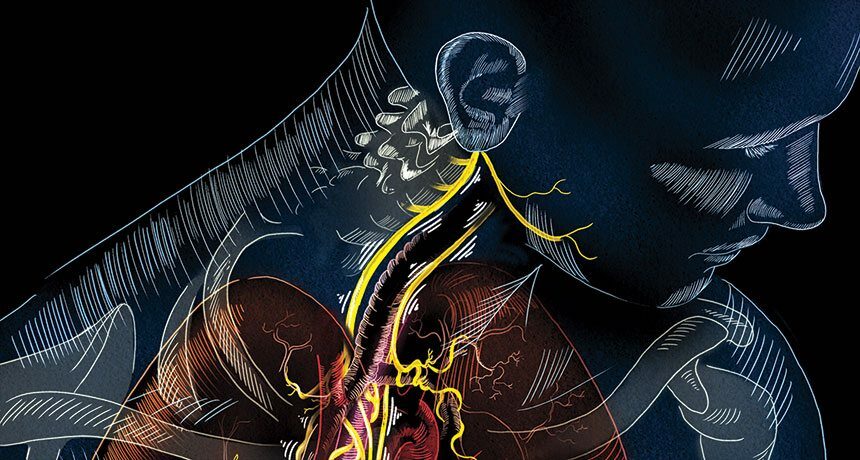It’s ok to allow stress when you need it—it’s a survival mechanism—but in the modern world we are addicted to living in a stressed out state even when our lives aren’t in threat, and we have largely lost the ability to just chill. In fact, chilling out is often seen as a weakness in the Western world—it goes against the “no pain no gain” mentality or the “I’ll sleep when I die” mantra that many live by and preach.
So if we need to chill out more and balance out with less stress, where the heck do we start?! Sometimes we’re so revved up that even laying down to relax isn’t enough to turn off the stress!
Let’s back up and talk about the stress control house: the autonomic nervous system (ANS). The ANS regulates visceral functions that are involuntary and reflexive, and it has two branches. The parasympathetic branch is the “rest-and-digest” low-stress mode, while the sympathetic branch is the “fight-or-flight” high-stress mode. Most people don’t tap into the parasympathetic enough these days, and instead, we spend a good portion of our lives stuck in the sympathetic branch. Athletes are especially at risk for being chronically stressed—exercise is a stress even if it’s enjoyable.
The “autonomic” nature of the ANS may imply that we don’t have any control over stress vs. no stress, but that’s certainly not the case. Our thoughts and actions directly affect our ANS. We have the control to choose a body that’s stressed or choose one that’s calm and relaxed.
The amount of relaxation in our body is measured by vagal tone, the degree of parasympathetic activity that’s happening within us at a given time measured by the activity of the vagus nerve. If you have strong vagal tone, this means you can relax quickly after stress—in other words, you respond well to cues that lower stress and can turn on your “rest-and-digest” mode with relative ease. Low vagal tone means even when you try to chill you’re often still stressed. A good way to measure this is using heart-rate variability (HRV), which is a window into our ANS and stress. Try measuring when you’re lying down and resting and see how you fare.
A high- vs. low-stress environment in our body directly affects hormone activity, bodily functions, and ultimately our health and wellbeing. For example, vagus activity counters adrenaline excess, and while adrenaline is good and helpful at the right time we certainly don’t want it around all the time. Vagal tone also influences blood glucose regulation and inflammation in the body—as you can probably guess, high vagal tone leads to less inflammation and better blood glucose management, which can prevent all sorts of diseases.
However, it’s not as simple as turning on or off one of the branches. When we chronically promote a high-stress environment in our bodies via our actions, lifestyle, choices (and accumulated history), we become even more stuck in this high-stressed state and literally decrease our ability to truly relax and shake the stress. This is what leads to health problems—physical and mental.
So without further ado, let’s cover proven ways to engage higher vagal tone activity to allow for more calming and rejuvenation within! Keep in mind, if you’re good at parasympathetic activation, this also helps decrease nerves and anxiousness before a big event like a wedding, public presentation, etc., as well as help recovery from stressful life events ranging from loss of a loved one to recovering from an eating disorder. If you get good at increasing vagal tone and not letting potentially stressful scenarios get to you (even long before they take place) you’ll set yourself up for a healthy, happy, balanced life—you’ll even promote better gut health and avoid gut dysbiosis with more vagal tone!
15 Ways to Increase Vagal Tone
- Stress–reduction techniques (frequency is key)
- Meditation (daily, at least 5 minutes)
- Relaxing yoga (at least one hour per week)
- Sing, laugh and be silly!
- Deep breathing
- Tai Chi
- Avoid extreme temperatures—hot or cold
- Avoid extreme emotions
- Avoid extreme workouts and races
- Crossfit
- Marathons
- Grueling triathlons
- But moderate exercise is ok, defined as 20-60 minutes of low-intensity activity, such as walking
- Acupuncture
- Specifically address ST36 acupuncture point (vagus nerve)
- Also effective for gut healing
- Gargle with black cumin seed oil for 3 minutes, then spit
- Place face into cold water (only face) for a few seconds once a day
- Do not skip meals
- No intermittent fasting (no more than 3-4 hours without food)
- Avoid ketosis, and moderate carbs encourages (no less than 100g carbs a day)
- Rest, nap and sleep more. Avoid sleep deprivation
- Be social
- Nourish adrenals—proper diet, supplement if needed, less reliance on cortisol-driven activities, limit or no caffeine, etc.
- Heal underlying infections, gut, thyroid, HPA axis, etc.
- Underlying health conditions cause stress. Fix root problems to fully heal!

